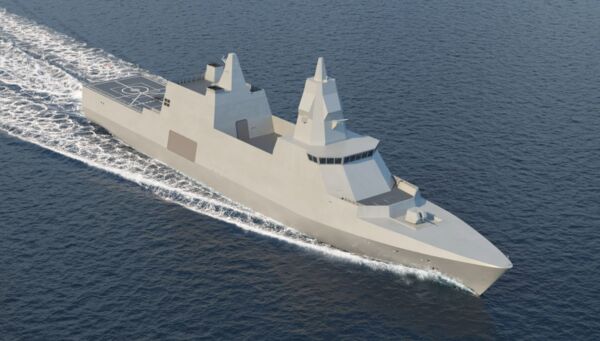
A computer-generated image of what Singapore's multirole combat vessel might look like. (Singapore Ministry of Defence)
For much of its existence since it was established in 1967 the Republic of Singapore Navy (RSN) – then known as the Singapore Naval Volunteer Force – was concerned with securing the country's territorial waters against threats such as smugglers and pirates.
However, beginning in the 1970s the service underwent a major introspection of its roles and responsibilities. At that time, the relatively tiny island at the southern tip of the Malay Peninsula was growing rapidly as a major port and transhipment hub and there was an urgent need for the country to ensure that ships calling at and departing from its shores were well protected against conventional and non-conventional maritime threats.
Policymakers of the time decided that to continue thriving as a major port of call for ships plying the east-west maritime routes the country's navy needed to break out of its mould as a coastguard-like service into a maritime power that projects its forces into the country's sea lines of communication (SLOCs) including those that run through the Strait of Malacca and the South China Sea.
With this in mind, the Victory-class programme was conceived and the MGB 62 design from Germany's Lürssen shipyard was selected for this requirement in a 1983 contract for six vessels. The corvette has an overall length of 62 m, an overall beam of 8.5 m, and displaces about 530 tonnes.
Powered by four MTU 16V 538 TB93 engines driving four shafts, the corvette has a top speed of about 35 kt and a cruising speed of approximately 16 kt – making the Victory-class the RSN's fastest vessels in service from the time they were commissioned until the present
Looking to read the full article?
Gain unlimited access to Janes news and more...







